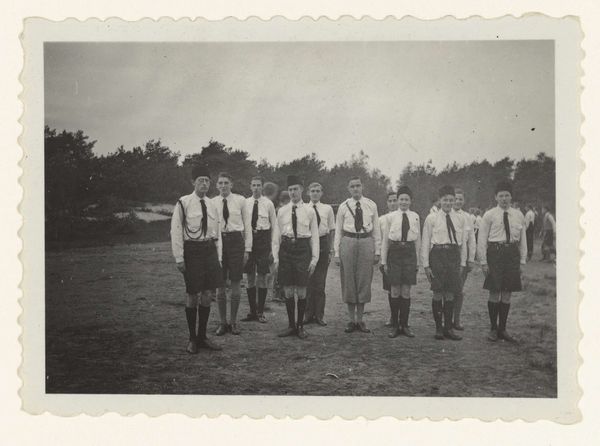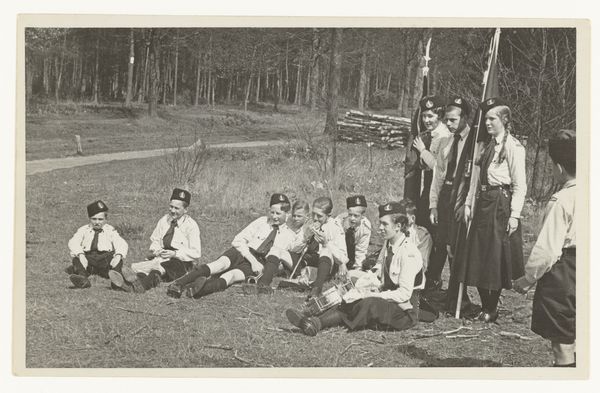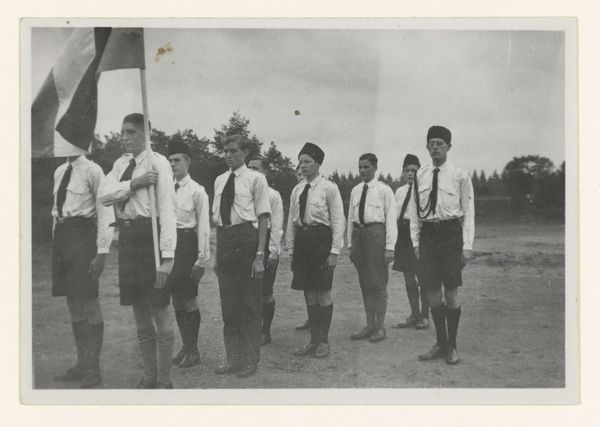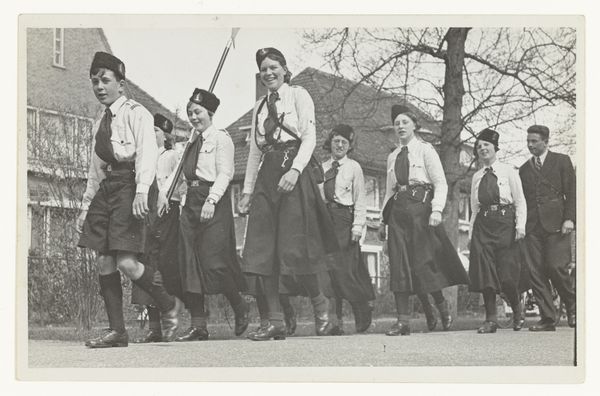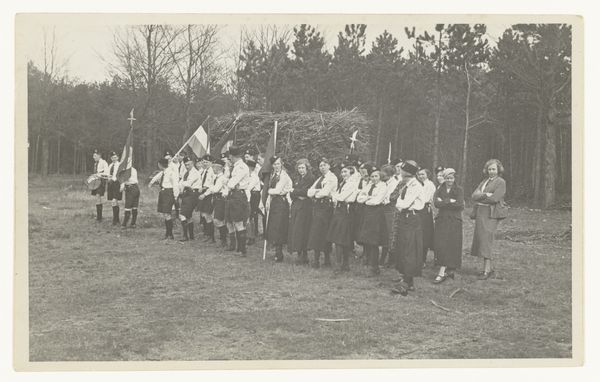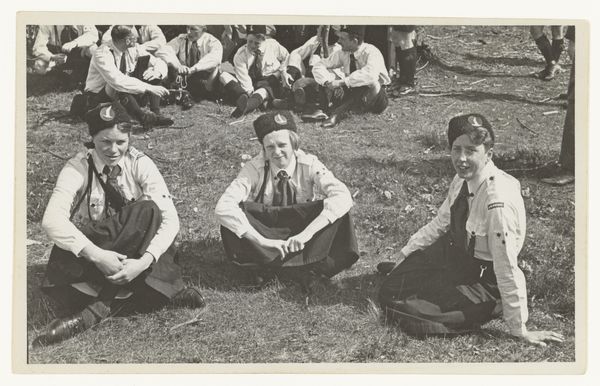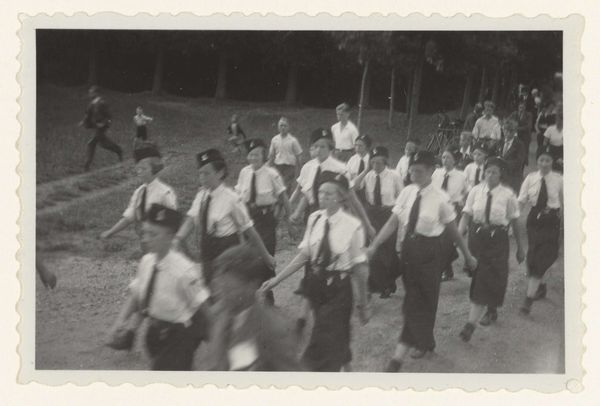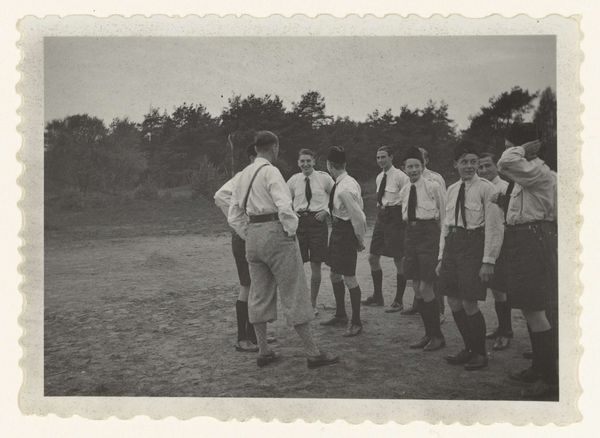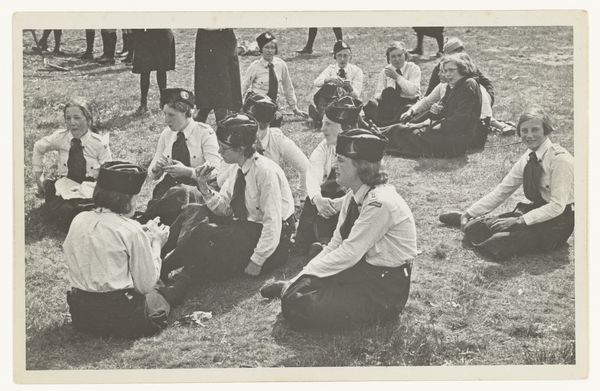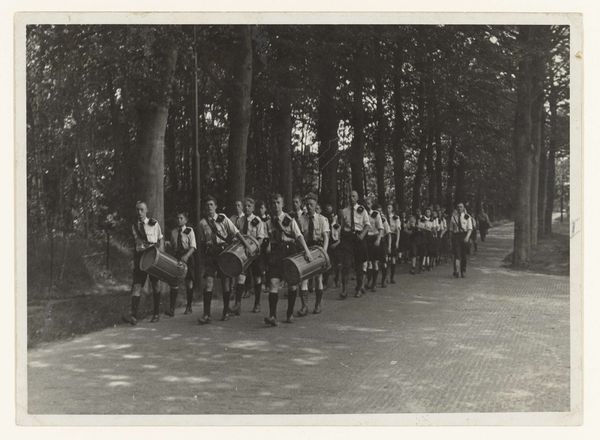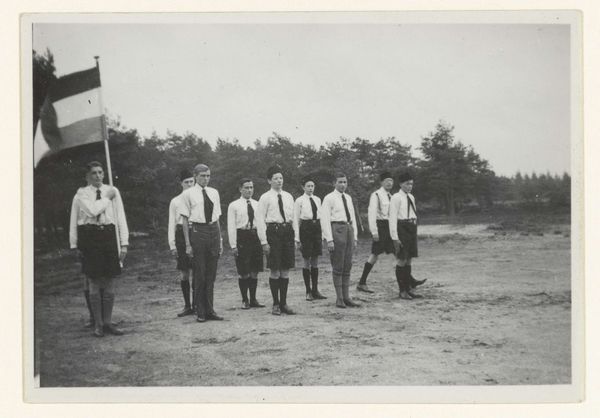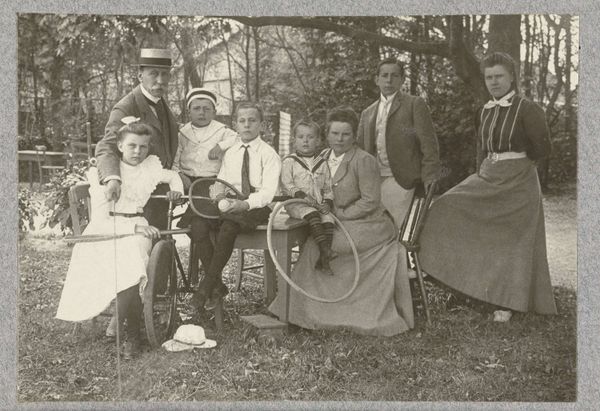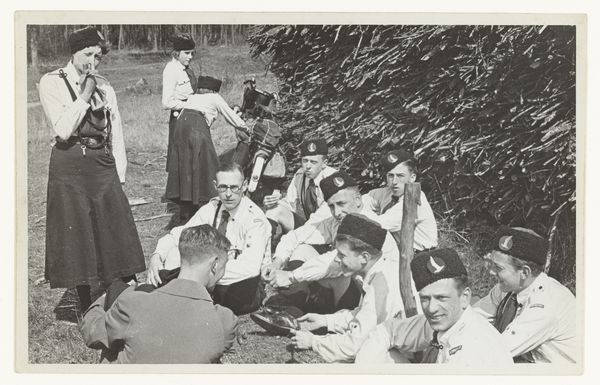
photography, gelatin-silver-print
#
portrait
#
print photography
#
social-realism
#
archive photography
#
photography
#
group-portraits
#
gelatin-silver-print
Dimensions: height 8.5 cm, width 13.5 cm
Copyright: Rijks Museum: Open Domain
Editor: This gelatin-silver print, "Na afloop van de optocht Jeugdstorm" by J. Otto, dates from around 1935-1937. Looking at it, I'm immediately struck by the regimented pose of this group, and I’m curious about its social context. What do you see when you look at this photograph? Curator: For me, this image screams about the relationship between photography, labor and social control. Think about it. Producing such an image wasn't simply a matter of pointing and shooting. Gelatin-silver prints require specific material inputs, chemical processes, darkroom techniques, all reflecting particular technologies of reproduction. Who was able to afford the equipment and training necessary to mass-produce propaganda materials such as this photograph? And what ideological function does this image serve? Editor: That’s fascinating. I hadn’t really considered the means of production of the image itself. You're making me consider photography not just as art, but as work. Curator: Precisely! And within that labor, there’s the labor represented *within* the photograph, too. Consider what the clothing represents here; standardized uniforms, clearly not made for individual expression, but instead intended to display power and social position within a strict hierarchical structure. Do we see in these faces pride, obligation, boredom, a mixture of them all? And what about the ground? This staged “nature” is likely at the edge of town: easily accessible by foot, and thus not needing a vehicle, keeping this project easily confined and inexpensive. Editor: It really changes my perspective. I was initially thinking about the propaganda aspect, but you've pushed me to consider it in terms of material production and labor involved. Curator: I’m glad. Sometimes art's real power lies not just in *what* it shows, but *how* it’s made and how that making reinforces or challenges power structures. It is something for us all to continue considering.
Comments
No comments
Be the first to comment and join the conversation on the ultimate creative platform.

